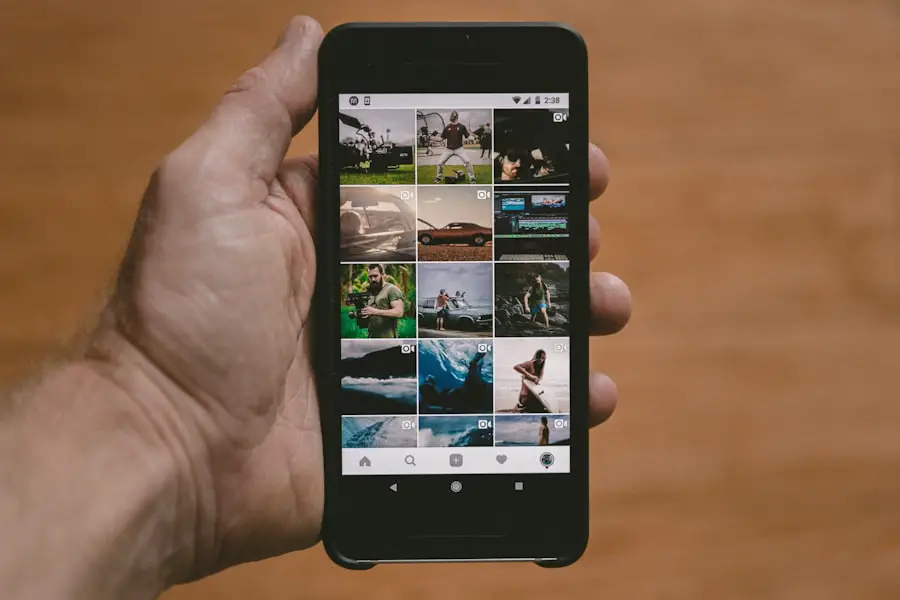The International Mobile Equipment Identity (IMEI) number is a unique identifier assigned to mobile devices, particularly those that connect to cellular networks. This 15-digit number serves as a fingerprint for your device, distinguishing it from all other mobile phones globally. The IMEI is crucial for various functions, including network authentication, tracking stolen devices, and managing warranty claims.
Each mobile device has its own IMEI number, which is embedded in the hardware and can also be found in the software settings of the device. The IMEI number is not just a random sequence of digits; it follows a specific structure that encodes information about the device itself. This includes details such as the manufacturer, model, and even the country of origin.
The significance of the IMEI number extends beyond mere identification; it plays a vital role in the telecommunications ecosystem, enabling service providers to manage devices on their networks effectively. In essence, the IMEI number is a critical component of mobile technology, ensuring that devices can be tracked, authenticated, and managed securely.
Key Takeaways
- An IMEI number is a unique identifier for mobile devices, used for tracking and security purposes.
- To find the IMEI number on your iPhone, dial *#06# or go to Settings > General > About.
- The IMEI number is important for tracking lost or stolen phones, as well as for activating and deactivating devices on a network.
- IMEI numbers are used for security to block stolen phones from accessing cellular networks and to track down criminals.
- The structure of an IMEI number consists of a TAC, FAC, SNR, and CD, which provide information about the device.
How to Find the IMEI Number on Your iPhone
Method 1: Through iPhone Settings
One of the simplest methods is to access the device’s settings. By navigating to “Settings,” then “General,” and finally “About,” you will find a section that lists various details about your iPhone, including the IMEI number. This method is particularly useful for users who prefer to find information directly on their devices without needing any additional tools.
Method 2: Through the Physical Device
Another way to find your iPhone’s IMEI number is through the physical device itself. For most iPhone models, the IMEI number is printed on the SIM tray. By ejecting the SIM tray using a SIM eject tool or a paperclip, you can easily read the IMEI number inscribed on it.
Alternative Method: Through Original Packaging
Additionally, if you have the original packaging of your iPhone, the IMEI number is often printed on the barcode label affixed to the box. This provides an alternative method for users who may not have access to their device at the moment.
The Importance of the IMEI Number

The IMEI number holds significant importance for both users and service providers. For users, it serves as a safeguard against theft and loss. If a device is stolen, reporting its IMEI number to the carrier can lead to the device being blacklisted, rendering it unusable on any network.
This feature acts as a deterrent for thieves, as they know that stolen devices can be easily tracked and rendered inoperable. Furthermore, having your IMEI number handy can expedite warranty claims and repairs, as manufacturers often require this information to verify ownership and eligibility for service. From a service provider’s perspective, the IMEI number is essential for managing devices on their networks.
It allows carriers to authenticate devices when they connect to their services, ensuring that only legitimate devices are granted access. This helps maintain network integrity and security while also enabling providers to track usage patterns and manage resources effectively. Additionally, in cases of fraud or misuse, the IMEI number can be instrumental in identifying and addressing issues related to unauthorized access or billing discrepancies.
How the IMEI Number is Used for Security
| IMEI Number Usage | Security Benefit |
|---|---|
| Device Identification | Helps in tracking and identifying stolen or lost devices |
| Network Blocking | Allows network providers to block stolen devices from accessing their network |
| Authentication | Used for device authentication and authorization purposes |
| Blacklisting | Enables blacklisting of devices with fraudulent or unauthorized IMEI numbers |
The security implications of the IMEI number are profound and multifaceted. When a mobile device connects to a cellular network, its IMEI number is transmitted to the carrier as part of the authentication process. This allows the network to verify that the device is legitimate and not reported as lost or stolen.
If a device’s IMEI number has been blacklisted due to theft or fraud, the network can deny access, effectively preventing unauthorized use of the device. Moreover, law enforcement agencies often utilize IMEI numbers in investigations related to mobile device theft or criminal activity. When a device is reported stolen, authorities can track its location using its IMEI number if it connects to any cellular network.
This capability enhances public safety by enabling quicker recovery of stolen property and deterring criminal behavior associated with mobile devices. The ability to trace devices through their IMEI numbers underscores their importance in maintaining security within telecommunications.
Understanding the Structure of an IMEI Number
An IMEI number consists of 15 digits that are divided into several components, each serving a specific purpose. The first eight digits represent the Type Allocation Code (TAC), which identifies the manufacturer and model of the device. The next six digits are known as the Serial Number (SNR), which uniquely identifies an individual device within its model range.
The final digit is a check digit calculated using the Luhn algorithm, which helps verify that the IMEI number has been entered correctly. This structured format not only aids in identifying devices but also facilitates various administrative functions within telecommunications networks. For instance, when manufacturers release new models, they obtain a unique TAC from regulatory bodies to ensure that each new device can be accurately identified and tracked.
Understanding this structure can be beneficial for users who may need to provide their IMEI numbers for support or warranty purposes, as it allows them to recognize potential discrepancies or issues with their devices.
How to Check if an iPhone is Blacklisted Using the IMEI Number

Checking if an iPhone is blacklisted using its IMEI number is a crucial step for anyone considering purchasing a second-hand device or verifying their own phone’s status after reporting it lost or stolen. Several online services allow users to input their IMEI numbers and receive information about whether their device has been blacklisted by carriers. These services typically cross-reference databases maintained by various telecommunications companies to provide accurate results.
To perform this check, you simply need to locate your iPhone’s IMEI number using one of the methods previously mentioned and enter it into one of these online tools. The results will indicate whether your device is active on any network or if it has been reported as lost or stolen. It’s important to note that while many services offer this functionality for free, some may charge a fee for more detailed reports or additional features such as unlocking services or warranty checks.
Can an IMEI Number be Changed or Altered?
The question of whether an IMEI number can be changed or altered is complex and often surrounded by legal implications. Technically speaking, it is possible for someone with advanced technical skills to modify an IMEI number using specialized software or hardware tools. However, doing so is illegal in many jurisdictions and can lead to severe penalties, including fines and imprisonment.
Law enforcement agencies actively pursue individuals who engage in such activities due to their association with criminal behavior, such as trafficking in stolen devices. From a practical standpoint, legitimate users should never attempt to change their device’s IMEI number. Altering this identifier can void warranties and lead to complications with service providers who rely on accurate IMEI information for network management and security purposes.
Instead of attempting to change an IMEI number, users facing issues related to their device should seek assistance from authorized service centers or their mobile carriers.
How to Report a Stolen iPhone Using the IMEI Number
Reporting a stolen iPhone using its IMEI number involves several steps that are crucial for ensuring that your device can be tracked and potentially recovered. First, you should contact your mobile carrier immediately upon realizing that your iPhone has been stolen. Provide them with your device’s IMEI number along with any other relevant information they may require.
Most carriers have protocols in place for handling stolen devices and will initiate a blacklist process to prevent unauthorized use on their network. In addition to notifying your carrier, it’s advisable to report the theft to local law enforcement authorities. When filing a police report, having your iPhone’s IMEI number readily available will help law enforcement track your device more effectively if it comes online again.
Some jurisdictions may also require proof of ownership, so having documentation such as purchase receipts can be beneficial during this process.
How to Protect Your IMEI Number from Unauthorized Access
Protecting your IMEI number from unauthorized access is essential for maintaining your privacy and security in an increasingly digital world. One effective way to safeguard this information is by avoiding sharing it unnecessarily with third parties or untrusted sources. Be cautious when providing your IMEI number online; ensure that you are using reputable websites or services that require this information for legitimate purposes.
Additionally, consider using security features available on your iPhone, such as enabling Find My iPhone and setting up strong passwords or biometric authentication methods like Face ID or Touch ID. These measures not only protect your device but also help secure sensitive information like your IMEI number from potential theft or misuse. Regularly monitoring your accounts for suspicious activity can also alert you to any unauthorized attempts to access your personal information.
Common Issues Related to IMEI Numbers and How to Fix Them
Several common issues can arise concerning IMEI numbers that users should be aware of. One frequent problem is when an iPhone displays an “Invalid IMEI” message after a software update or restoration process. This issue may occur due to software glitches or corruption during updates.
To resolve this problem, users can try resetting their network settings or performing a factory reset on their device after backing up important data. Another common issue involves discrepancies between the displayed IMEI number on the device and what is recorded with the carrier or manufacturer. This situation can arise if a phone has been repaired or refurbished without proper documentation of its original specifications.
In such cases, contacting customer support for both Apple and your carrier can help clarify any inconsistencies and ensure that your device’s information is accurately updated across all platforms.
Frequently Asked Questions About IMEI Numbers for iPhone Users
Many iPhone users have questions regarding their devices’ IMEI numbers due to their importance in mobile technology and security. One common question is whether an iPhone can function without an IMEI number. The answer is no; without an IMEI number, a mobile device cannot connect to cellular networks, rendering it essentially useless for making calls or accessing mobile data.
Another frequently asked question pertains to how often users should check their device’s IMEI status. While there’s no set frequency for checking an IMEI number, it’s advisable to verify its status before purchasing a second-hand phone or after reporting a lost device. Regular checks can help ensure that your device remains active and secure on networks while also providing peace of mind regarding its status against theft or fraud.
Understanding these aspects of your iPhone’s IMEI number can empower users with knowledge about their devices’ security and functionality while fostering responsible ownership practices in today’s interconnected world.
If you are curious about the IMEI number on your iPhone, you may want to check out the article on getiphoneinfo.com. This website provides detailed information about iPhone IMEI numbers and how to find them on your device. Additionally, you can learn more about the terms and conditions of using the website by visiting getiphoneinfo.com/terms-and-conditions/. For more background on the creators of the site and their mission, you can visit the “About” page at getiphoneinfo.com/about/.
FAQs
What is an IMEI number on an iPhone?
The IMEI (International Mobile Equipment Identity) number is a unique 15-digit code that identifies a specific mobile device, such as an iPhone. It is used by mobile networks to identify valid devices and can also be used to track a lost or stolen phone.
Where can I find the IMEI number on my iPhone?
You can find the IMEI number of your iPhone by dialing *#06# on the phone’s keypad. The IMEI number will be displayed on the screen. You can also find it in the Settings app under “General” and “About” or on the back of the iPhone’s original packaging.
What is the purpose of the IMEI number on an iPhone?
The IMEI number is used by mobile networks to identify valid devices and prevent the use of stolen or blacklisted phones. It is also used by manufacturers and retailers for inventory and warranty purposes.
Can I change the IMEI number on my iPhone?
It is illegal to change the IMEI number of a mobile device in many countries, including the United States. Doing so can result in severe penalties and consequences. Additionally, changing the IMEI number of a device can void its warranty and may cause it to be blacklisted by mobile networks.
Is the IMEI number of an iPhone linked to my personal information?
The IMEI number itself is not directly linked to your personal information. However, mobile networks and law enforcement agencies can use the IMEI number to track a lost or stolen phone, so it is important to keep your IMEI number confidential.










